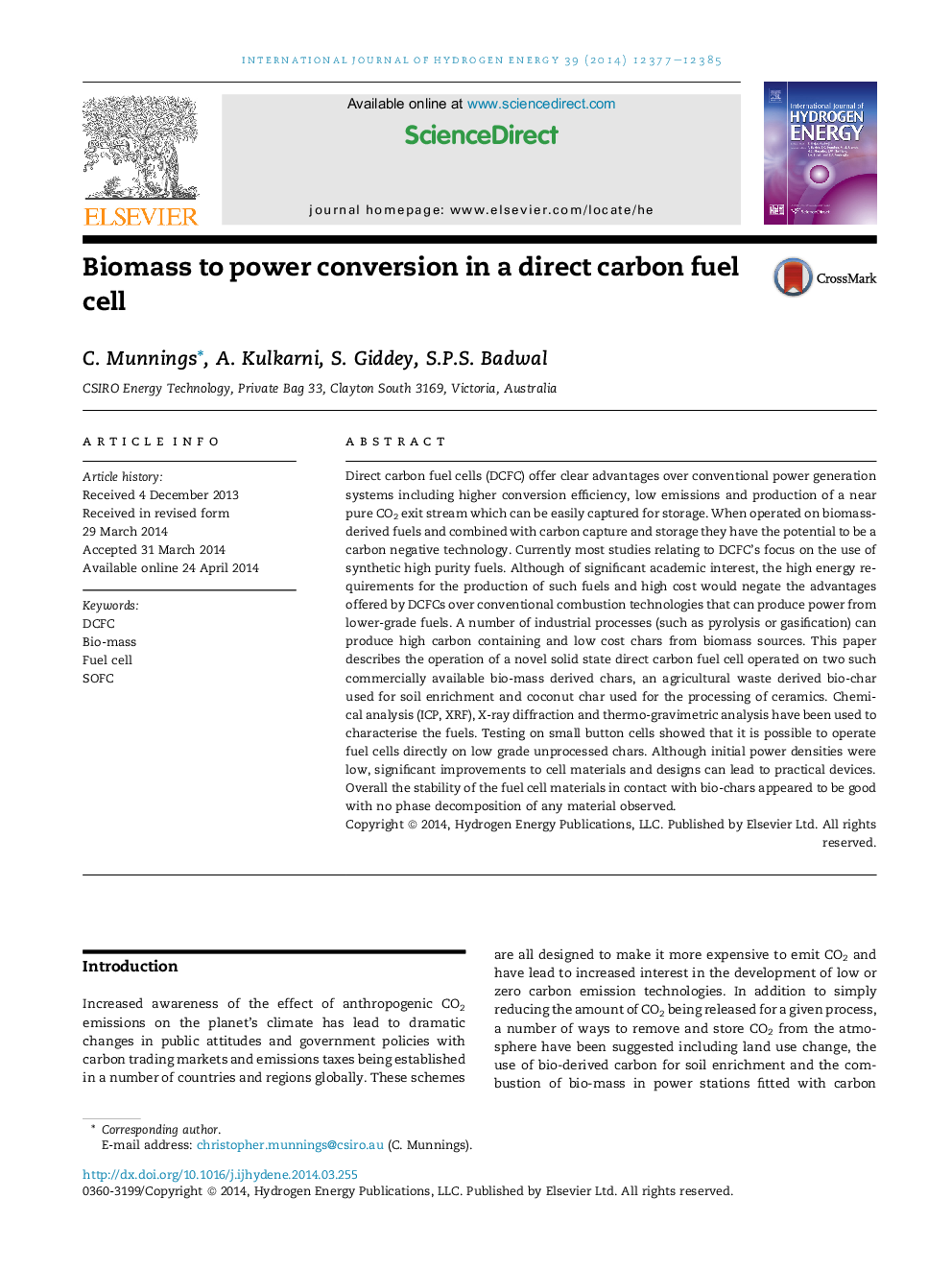| Article ID | Journal | Published Year | Pages | File Type |
|---|---|---|---|---|
| 1273042 | International Journal of Hydrogen Energy | 2014 | 9 Pages |
•A solid state direct carbon fuel cell was operated on biomass derived chars.•The ash species in biomass derived fuels did not degrade fuel cell materials used.•The biomass with high ash content, volatiles and moisture resulted in poor performance.
Direct carbon fuel cells (DCFC) offer clear advantages over conventional power generation systems including higher conversion efficiency, low emissions and production of a near pure CO2 exit stream which can be easily captured for storage. When operated on biomass-derived fuels and combined with carbon capture and storage they have the potential to be a carbon negative technology. Currently most studies relating to DCFC's focus on the use of synthetic high purity fuels. Although of significant academic interest, the high energy requirements for the production of such fuels and high cost would negate the advantages offered by DCFCs over conventional combustion technologies that can produce power from lower-grade fuels. A number of industrial processes (such as pyrolysis or gasification) can produce high carbon containing and low cost chars from biomass sources. This paper describes the operation of a novel solid state direct carbon fuel cell operated on two such commercially available bio-mass derived chars, an agricultural waste derived bio-char used for soil enrichment and coconut char used for the processing of ceramics. Chemical analysis (ICP, XRF), X-ray diffraction and thermo-gravimetric analysis have been used to characterise the fuels. Testing on small button cells showed that it is possible to operate fuel cells directly on low grade unprocessed chars. Although initial power densities were low, significant improvements to cell materials and designs can lead to practical devices. Overall the stability of the fuel cell materials in contact with bio-chars appeared to be good with no phase decomposition of any material observed.
Graphical abstractFigure optionsDownload full-size imageDownload as PowerPoint slide
